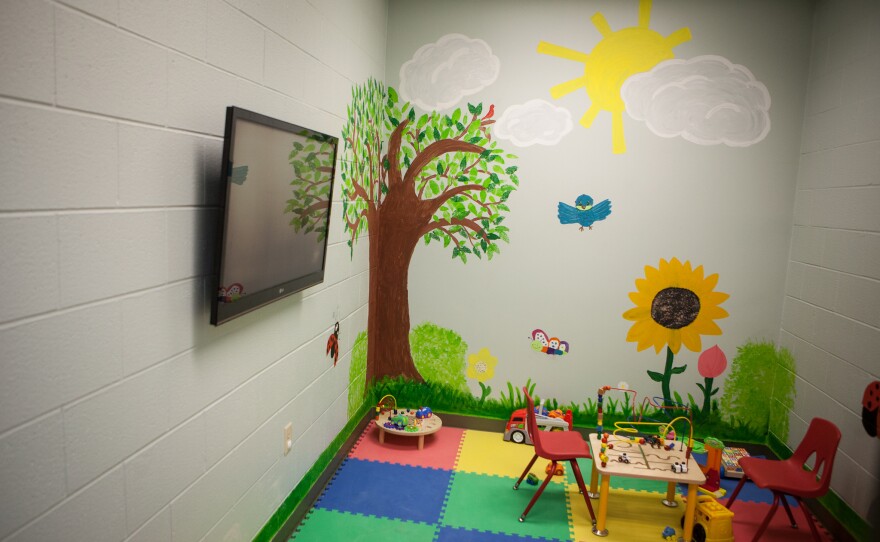Today, buses with Central American mothers and children apprehended at the border start arriving in Karnes City, about 54 miles southeast of San Antonio.
Immigration and Customs Enforcement (ICE) just finished remodeling a facility there. But unlike other cities, this detention center isn’t causing a stir in the community.
There were no protestors at the Karnes County Residential Center. As we walked around the facility there were no people holding signs for or against the immigrants that would be arriving there.
One thing that was pretty evident was ICE's delight in showcasing how far it’s come from 2006, when the agency was criticized for the way it treated immigrant families at the T. Don Hutto Residential Center northeast of Austin.
At T. Don Hutto, ICE was criticized for surrounding the facility with barbed wire, for having prison-like uniforms for parents and children, and for rationing meals and keeping detainees in locked cells.
ICE San Antonio Field Office Director Enrique Lucero says all that's different at Karnes County. He stresses the new language ICE is using – people are not called inmates. Instead, they are “residents.” And there are no guards, but rather "resident advisors.” Lucero also pointed out that in this facility there will be, what he called, freedom of movement.
"So, with a resident advisor, they are allowed to pick out the clothing of their choice,” Lucero says. “Also, their personal belongings may be stored there if they are traveling with luggage they will be stored here as a property room."
Each case is different. But Lucero estimated the average stay will be around 23 days. After that, those who can prove to an immigration judge that they are good candidates for asylum will stay in the US. The rest will be deported.
Right across the street from the detention center is CDR Strainers and Filters Inc. It's a shop that makes parts for the oil industry – it’s one of the largest employers in town. As Art Contreras welds metal baskets, he says few people in town bother with the politics of the immigrant arrivals.
"Can't say I don't want them here or anything like that you know? Like they say we are all immigrants,” Contreras says. “Everybody wants the best for themselves and their families and America is that place right now, you know?"
Contreras says other towns may feel like immigrants threaten their resources, but in Karnes City there is prosperity. The oil boom is evident in the dozens of tiny cottages that sprinkle every corner of the city to house the oil workers. Another sign of prosperity is the number of new trucks and cars on the streets.
At a nearby Mexican restaurant, Rosie Jauer said, instead of animosity, people in Karnes city are genuinely grateful for the jobs the detention center is bringing. They’ve hired nurses and teachers and cooks. Jauer said without those jobs, some of the younger folks would leave Karnes city.
"That's kind of what happens in a smaller community. You raise your children thinking that you are going to give them a better life and they end up leaving and finding their better life,” she says. “[We’re] trying to keep them here where they can do some good for their children and good for the school district."
Most oil workers don't bring their families to Karnes City. So, despite the financial boom, there are parts of the area that are in decline. Some believe the detention center will bring a much needed boost to those areas. ICE officials are considering whether to open other detention facilities in Texas, but they’re not yet ready to give any specifics.












